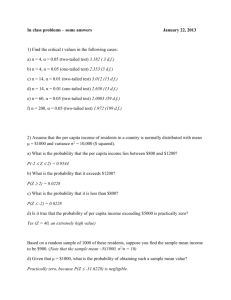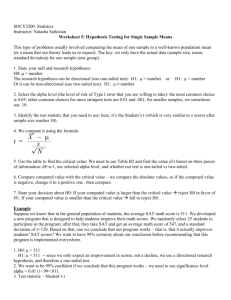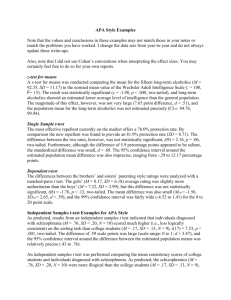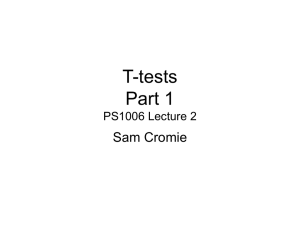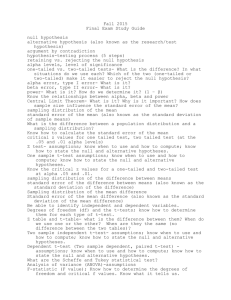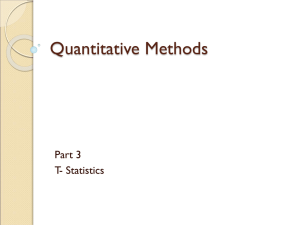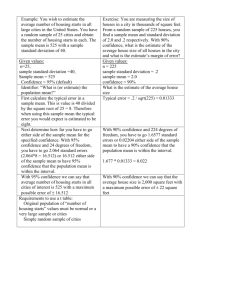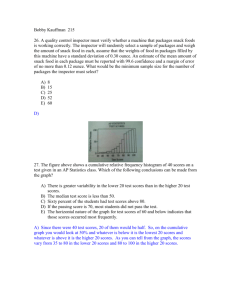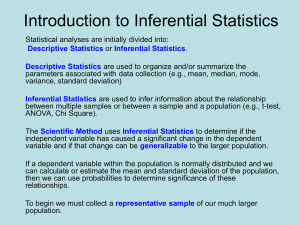Problem Set #3 Hypothesis Testing
advertisement
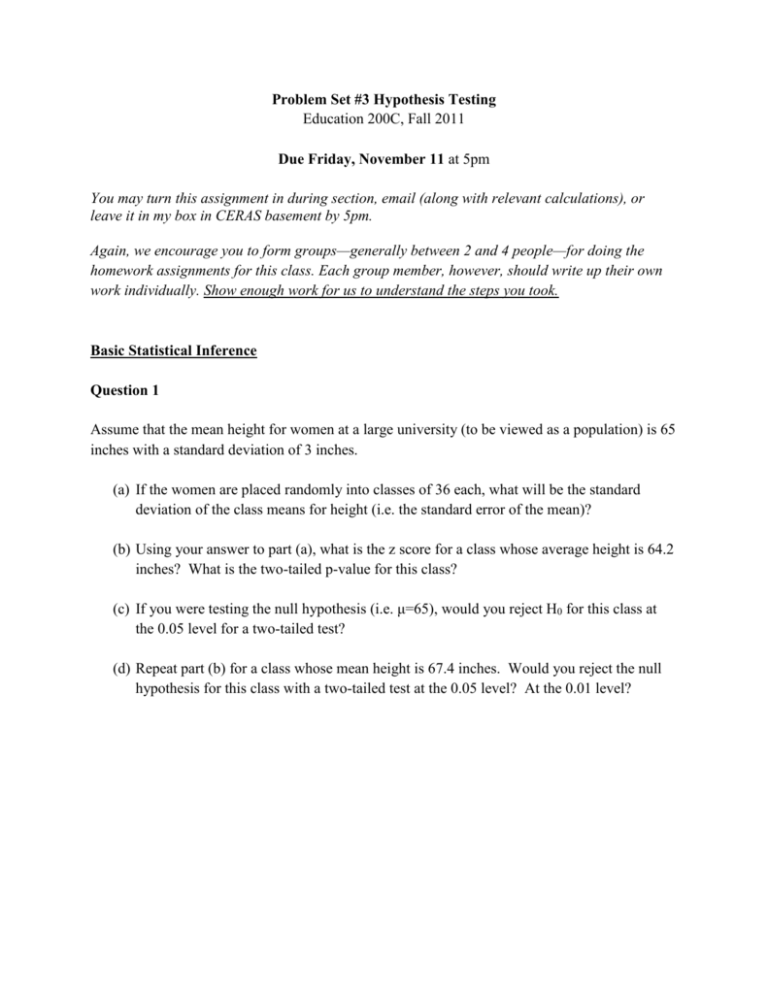
Problem Set #3 Hypothesis Testing Education 200C, Fall 2011 Due Friday, November 11 at 5pm You may turn this assignment in during section, email (along with relevant calculations), or leave it in my box in CERAS basement by 5pm. Again, we encourage you to form groups—generally between 2 and 4 people—for doing the homework assignments for this class. Each group member, however, should write up their own work individually. Show enough work for us to understand the steps you took. Basic Statistical Inference Question 1 Assume that the mean height for women at a large university (to be viewed as a population) is 65 inches with a standard deviation of 3 inches. (a) If the women are placed randomly into classes of 36 each, what will be the standard deviation of the class means for height (i.e. the standard error of the mean)? (b) Using your answer to part (a), what is the z score for a class whose average height is 64.2 inches? What is the two-tailed p-value for this class? (c) If you were testing the null hypothesis (i.e. μ=65), would you reject H0 for this class at the 0.05 level for a two-tailed test? (d) Repeat part (b) for a class whose mean height is 67.4 inches. Would you reject the null hypothesis for this class with a two-tailed test at the 0.05 level? At the 0.01 level? Question 2 Given that for SAT scores, μ=500 and σ=100: (a) Test the claim that students at a school called UC Shmerkeley have SAT scores that are statistically significantly higher than the ordinary population, because a random sample of 25 of their students averaged 530 on this test. Make your statistical decision by comparing the z-score for the Shmerkeley sample with the appropriate critical value for a two-tailed test. Would a two-tailed test be significant in this case? (b) Repeat part (a) for a random sample of 64 students, who also have a mean of 530 on the SAT. If your results are different from part (a), describe why. Question 3 (a) What is the difference between the standard deviation of a set of scores and the standard error of the mean of those scores? (b) Do behavioral science researchers want the standard error of the mean to be large or small? Why? (c) What happens to the standard error of the mean as the sample size (N) becomes smaller? Why? What does this imply about the dangers of using samples in behavioral science research that are very small? (d) What happens to the standard error of the mean as the standard deviation of the original scores in the population becomes larger? Why? Confidence Intervals and One Sample t Tests Question 4 This exercise relies on the following data set: 1, 3, 6, 0, 1, 1, 2, 1, 4. (a) Perform a t test in order to decide whether you can reject the null hypothesis of μ=2.5 at the 0.05 level (two-tailed) for these data. (b) Redo your t test in part (a) for a null hypothesis of μ=6.0 (c) Compute the 95% confidence interval (CI) for the population mean form which these data were drawn. Explain how this CI could be used to draw conclusions about the null hypothesis in parts (a) and (b). Question 5 You are drawing inferences about the mean of one population. (a) When should you use the t distributions as the theoretical model rather than the normal curve model? (b) Why is there a different critical t value for the different degrees of freedom? Question 6 (a) What happens to the size of the confidence interval as the standard error of the mean becomes larger? Why? (b) What happens to the size of the confidence interval as the sample size becomes larger? Why? (c) What are the advantages of having a smaller confidence interval? Two-Sample t Tests Question 7 An education psychologist obtains scores on a third grade math test from 41 girls and 31 boys, with the following results: girls, mean=48.75 (sd=9.0); boys, mean=46.07 (sd=10). Test the difference for significance at both the 0.05 and the 0.01 levels (two-tailed). Question 8 Two classes of pre-calculus students took an exam to place them into either Advance Placement or regular calculus the following year. Given the following data, can you reject the null hypotheses (alpha=0.05) that, as groups these classes are equally prepared (or not) for AP calculus? Class 1 62 54 59 56 59 Class 2 46 53 50 52 54
